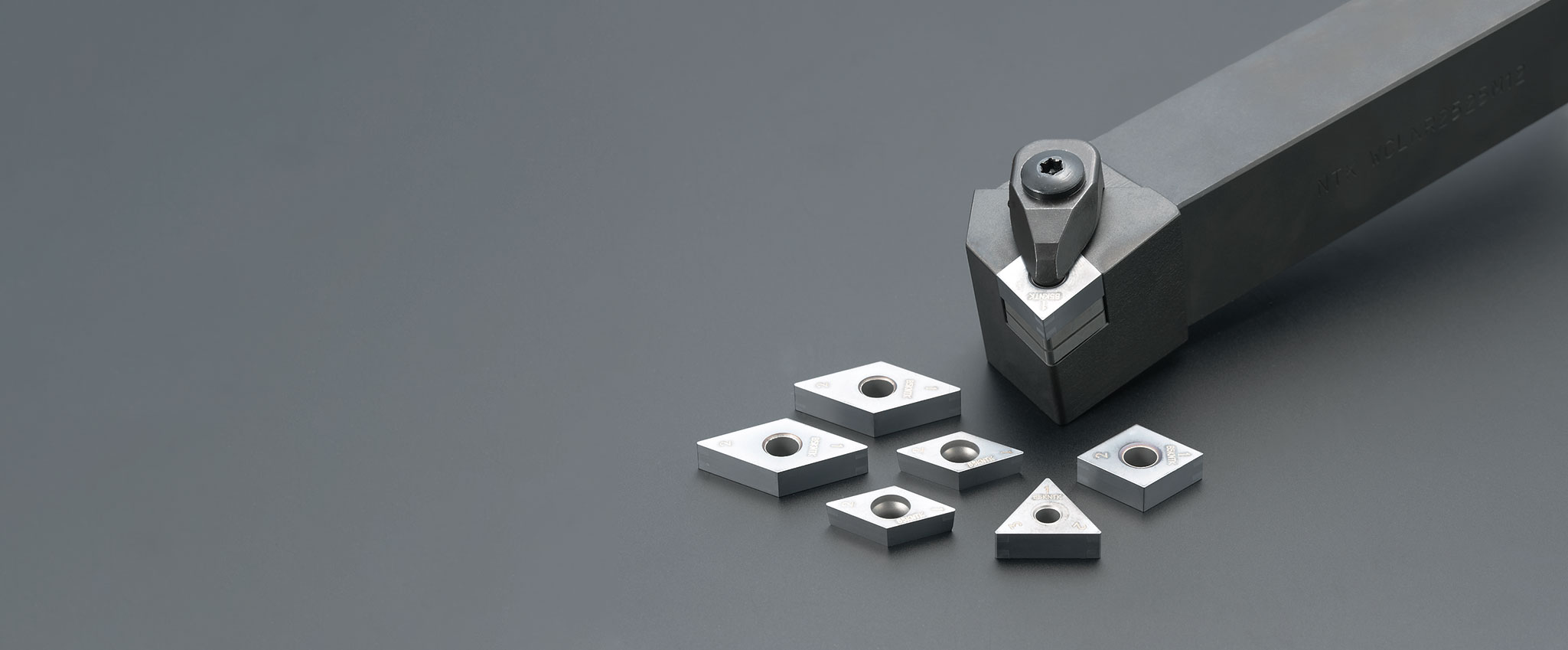
 CBN grades for finishing ductile cast iron| Coated (B5K) / Un-coated (B52)
CBN grades for finishing ductile cast iron| Coated (B5K) / Un-coated (B52)
Best CBN grades for high-speed finishing of ductile cast iron
High-speed finishing up to 1600 SFM
Achieves highly effective machining even surpassing ceramic
Features
- Ideal for finishing ductile cast iron
- Excellent wear resistance due to optimum CBN content and TiC binders
Tooling application
Ductile cast iron
Finish Turning
Grade characteristics
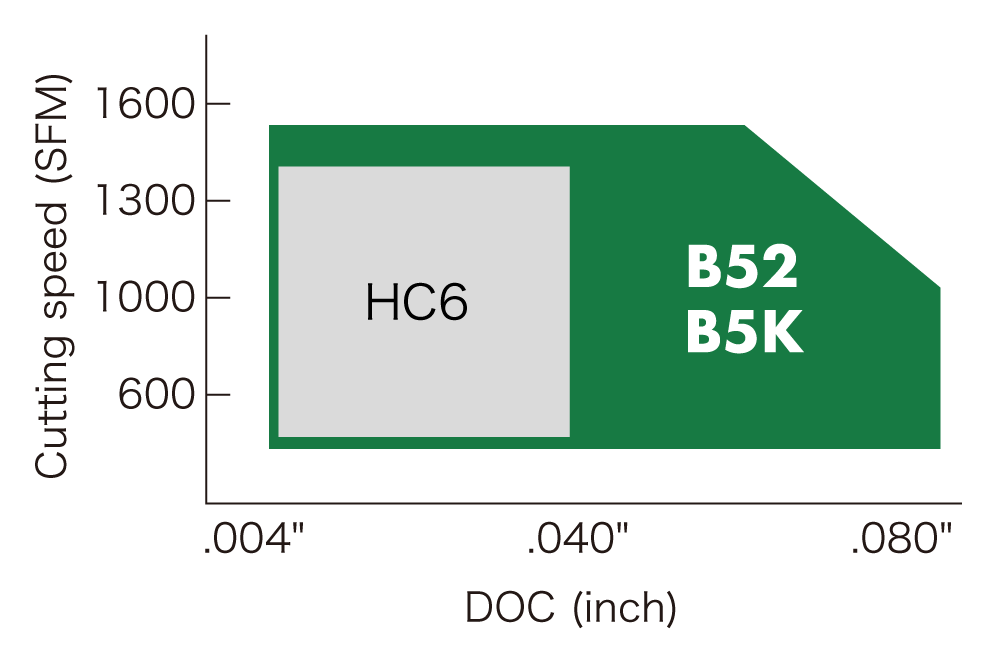
Cutting conditions
Scroll the table →
| Grade | Material | Operation type | Machining | Cutting speed (SFM) | Feed(IPR) | DOC(inch) | Coolant |
|---|---|---|---|---|---|---|---|
| B5K/B52 | Ductile cast iron | Turning | Finishing | 300 - 1600 | .004 - .016 | .012 - .080 | WET |
Case study
| ID bore finishing operation on a machine part | ||
|---|---|---|
|
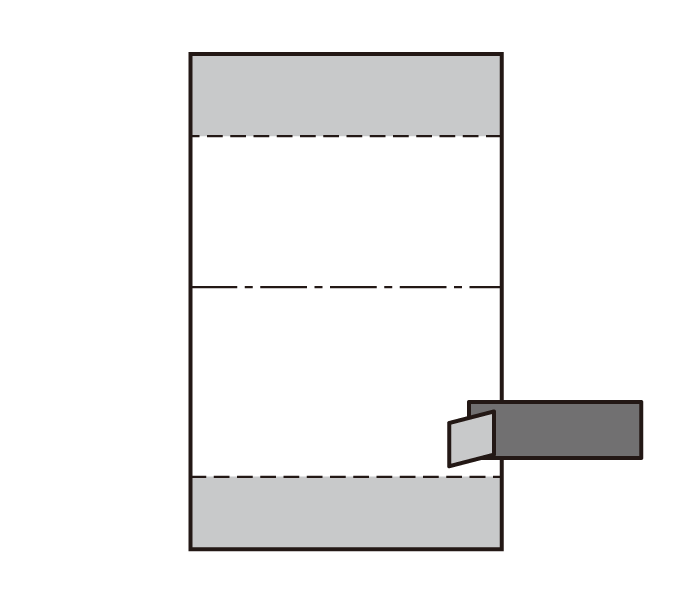 |
|
|
||
|
||
|
||
|
||
| B5K | 12 pcs / corner |
|
| Competitor's CBN | 6 pcs / corner |
|
- B5K achieved 2 times longer tool life machining this interrupted ID cut.
| Front hub | ||
|---|---|---|
|
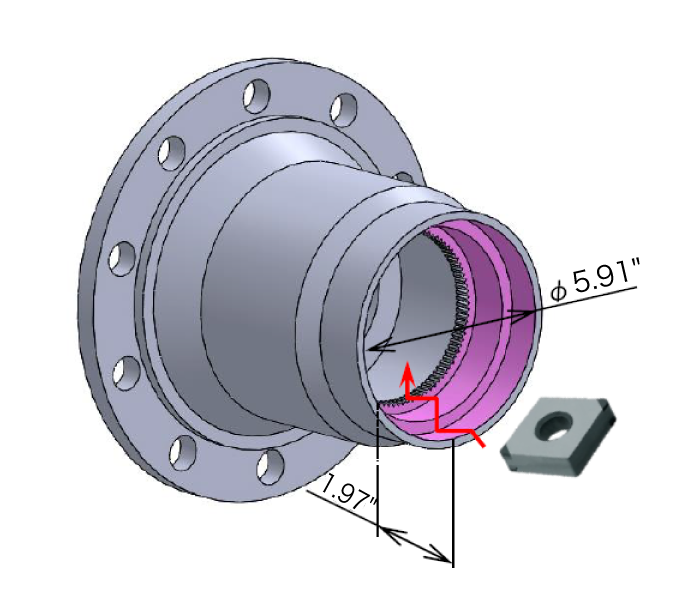 |
|
|
||
|
||
|
||
|
||
| B52 | 50 pcs / corner |
|
| Competitor's CBN | 20 pcs / corner |
|
- B52 performance resulted in 2.5 times longer tool life and stable machining performance over the competitor's CBN insert.
Tool lineup
Please check product catalog for tooling lineup
Other recommended products
-
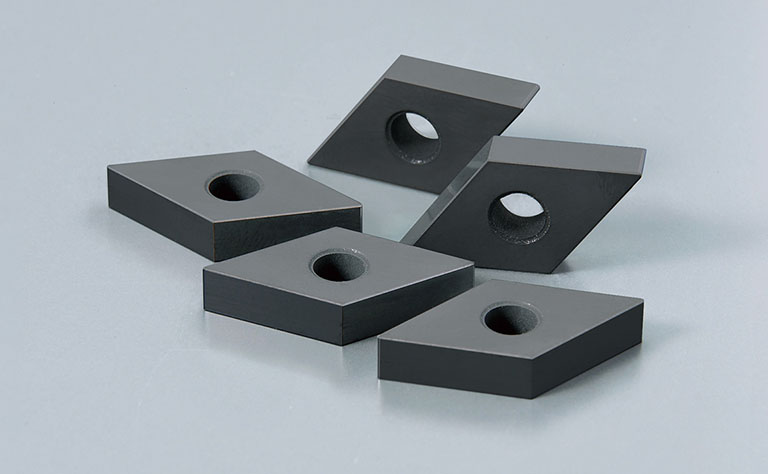
HC6For machining ductile cast iron| TiC ceramic + alumina
Specialized ceramic for finishing ductile iron
-

SP9Roughing to finishing of ductile cast iron & gray cast iron| Coated Silicon Nitride Ceramic
Covers roughing to finishing operations
-

SX6Exceptional wear resistance for rough machining of gray cast iron| Silicon nitride ceramic
First recommendation for roughing gray cast iron
-

CP1Roughing gray cast & ductile cast iron / CVD coated carbide
CVD coated carbide grade ideal for roughing
Useful information
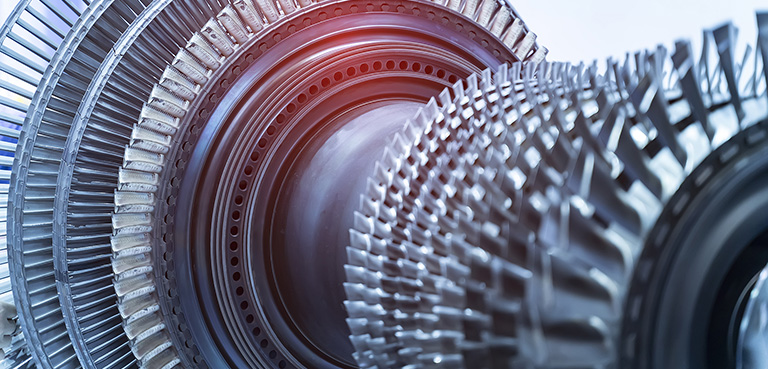 Points for maximizing the performance of ceramic insert〔 Milling roughness to semi-finishing of heat-resistant alloys 〕
Points for maximizing the performance of ceramic insert〔 Milling roughness to semi-finishing of heat-resistant alloys 〕 Points for maximizing the performance of ceramic insert 〔 Rough to semi-finish turning of heat-resistant alloys 〕
Points for maximizing the performance of ceramic insert 〔 Rough to semi-finish turning of heat-resistant alloys 〕 Tips for effectively cutting nickel-based alloys by knowing the material’s characteristics
Tips for effectively cutting nickel-based alloys by knowing the material’s characteristics How to Make Ceramic Cutting Tools from Scratch
How to Make Ceramic Cutting Tools from Scratch